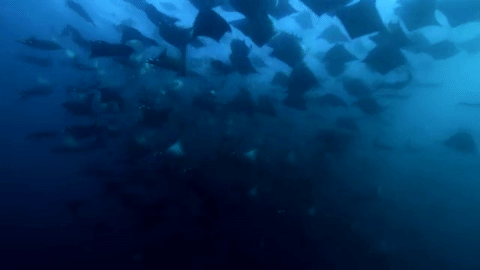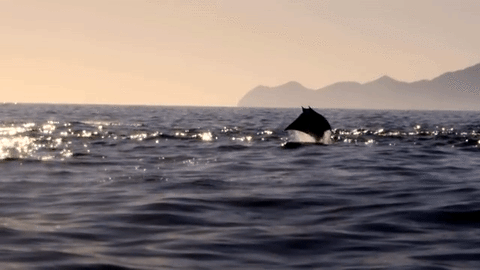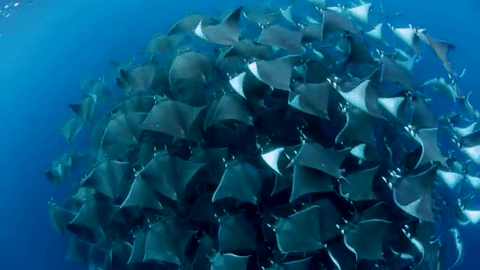art-tension:Mobula Rays (Flying Rays or Devil Rays)Also know as “devil rays”, “flying mobula” or sim
art-tension:Mobula Rays (Flying Rays or Devil Rays)Also know as “devil rays”, “flying mobula” or simply “flying rays”, due to their propensity for breaching out of the water, sometimes in a spectacular manner.The devil fish can attain a disc width of up to 5.2 m (17 ft) and can probably weigh over a ton,] second only to the Manta species in size. Despite their size, little is known about this genus, much of it being from anecdotal accounts.Closely related to sharks but with long, flat bodies and wing-likepectoral fins, they are ideally suited to swooping through the water yetseem equally at home in the air, so much so that they have earned thename “flying rays”Mobula rays leap spectacularly from the sea when they gather in largegroups, but scientists still don’t know why they do it, but some of themost spectacular jumps can reach over 6.5 feet above the surface.As far as they can tell, all mobulid rays jump, as do their myliobatid(eagle rays) cousins. Many theories have been suggested [as to why theyjump], from feeding, courting, communicating, and ridding themselves ofparasites.Soaring high above the waves as easily as a bird, mobula rays appearperfectly designed for this astonishing aerobatic display. The mobulaslaunch themselves straight up out of the water at top speed, and mostoften they land flat on their belly. However, sometimes they seem tolose control and do flips and twists before reconnecting with the water.The species are found in tropical waters and feed mostly on plankton, which is filtered into their bodies through their gills as swim.And it’s not just their jumping abilities that are extraordinary: In a recent study, a team of researchers discovered that a certain species of these devil rays, Mobula tarapacana, is among the deepest-diving ocean animals in the world, reaching depths over 6500 feet below the surface — well over a mile deep!Their large wing-shaped bodies and slow motion make them excellent sea gliders. They not only impress with their size but also with their very elegant flight into the blue oceans.Many mobula species like to travel in large packs, which makes them especially vulnerable to fishing. And, in fact, many species of mobula rays are endangeredby ReacherONE on imgur WATCH THE VIDEO: -- source link
Tumblr Blog : art-tension.tumblr.com









